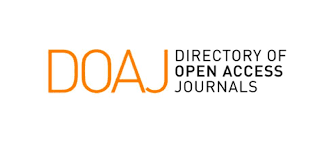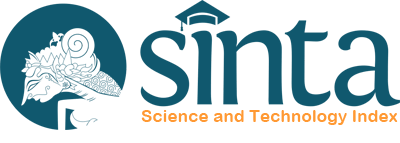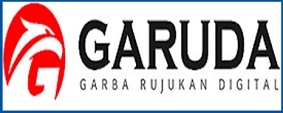Calculation of Laser-Induced Breakdown Spectroscopy Plasma Temperature using Boltzmann Equation using two Netral Cu line Emission
Abstract
Research have been conducted about calculating the plasma temperature using Laser-Induced Breakdown Spectroscopy (LIBS), located in Udayana University’s Laboratorium Penelitian Terpadu FMIPA. The calculation of Plasma Temperature is done using the Boltzmann Equation using the emission intensity and area under the curve of two wavelength from Cu neutral atom Cu I 521.82 nm and Cu I 510.55 nm. The intensity of Neutral Cu atom is obtained from focusing the Nd:YAG laser (1064 nm, 7 ns) with 80 mJ energy to the surface of Bras 6s (or 99.99%) slab in the air with 1 atm pressure and Helium gas with 60 mL/s flowrate, which will generate a plasma. The Photon emission from Cu neutral atoms in plasma will be caught by spectrometer HR 2500+ (14.336 CCD pixel, 200-800 nm). The average plasma temperature by delay time detection using intensity and area ratio is (8976.40±160.34) K and (13119.20±435.23) K respectively. In Helium gas, the temperature is (12261.21±419.06) K using intensity ratio and (16882.41±678.18) K using Area ratio.
Downloads
References
[2] Fajar La Tibo Sani. Analisa Perubahan Distribusi Frekuensi yang Dihasilkan Oleh Senar Gitar E1 Akibat Korosi Melalui Hasil Perekaman. Skripsi. Universitas Airlangga. Skripsi, Program Studi Fisika Fakultas Sains dan Teknologi Universitas Airlangga, 2014.
[3] Hery Suyanto, Diktat Kuliah Spektroskopi Terapan, Jurusan Fisika Fakultas atematika dan Ilmu Pengetahuan Alam Universitas Udayana, 2012.
[4] V. N. Rai, Laser-Induced Breakdown Spectroscopy: a Versatile Technique of Elemental Analysis and it’s Applications, 2014.
[5] David A. Cremers dan Leon J. Radziemski, Handbook of Laser-Induced Breakdown Spectroscopy. USA: John Wiley & Sons inc, 2006.
[6] Hery Suyanto dkk, Qualitative Analysis of Pb Liquid Sample Using Laser Induced Breakdown Spectroscopy (LIBS). International Conference on Theoretical and Applied Physics, 2012, pp. 11-16.
[7] P. Gibbon, Introduction to Plasma Physics. Switerland: CERN, 2017.
[8] J. A. Bittencourt, Fundamental of Plasma Physics Third Edition, New York: Springger, 2004.
[9] K. Wiesseman, A Short Introduction to Plasma Physics, 2014.
[10] K. Kagawa and H. Kurniawan, Laser-Induced Shock Wave Plasma Spectroscopy, Trends in applied Spectroscopy, Vol. 2, 1998.
[11] A. Kramida dkk. NIST Atomic Spectra Database (version 5.9), Gaithersburg: National Institute of Standards and Technology, 2021.
[12] Nasrullah Idris dkk, Excitation mechanisms in 1 mJ picosecond laser induced low pressure He plasma and the resulting spectral quality enhancement, Journal of Applied Physics, Vol. 117, 2015.
[13] Damayanti Cahya, Analisis Spektrum Udara Pada Sumber Elektron Berbasis Katoda Plasma (Sebkp) Dengan Monokromator Jobin Yvon H 25, Skripsi, Program Studi Fisika Fakultas Matematika dan Ilmu Pengetahuan Alam Universitas Negeri Yogyakarta, 2012.










